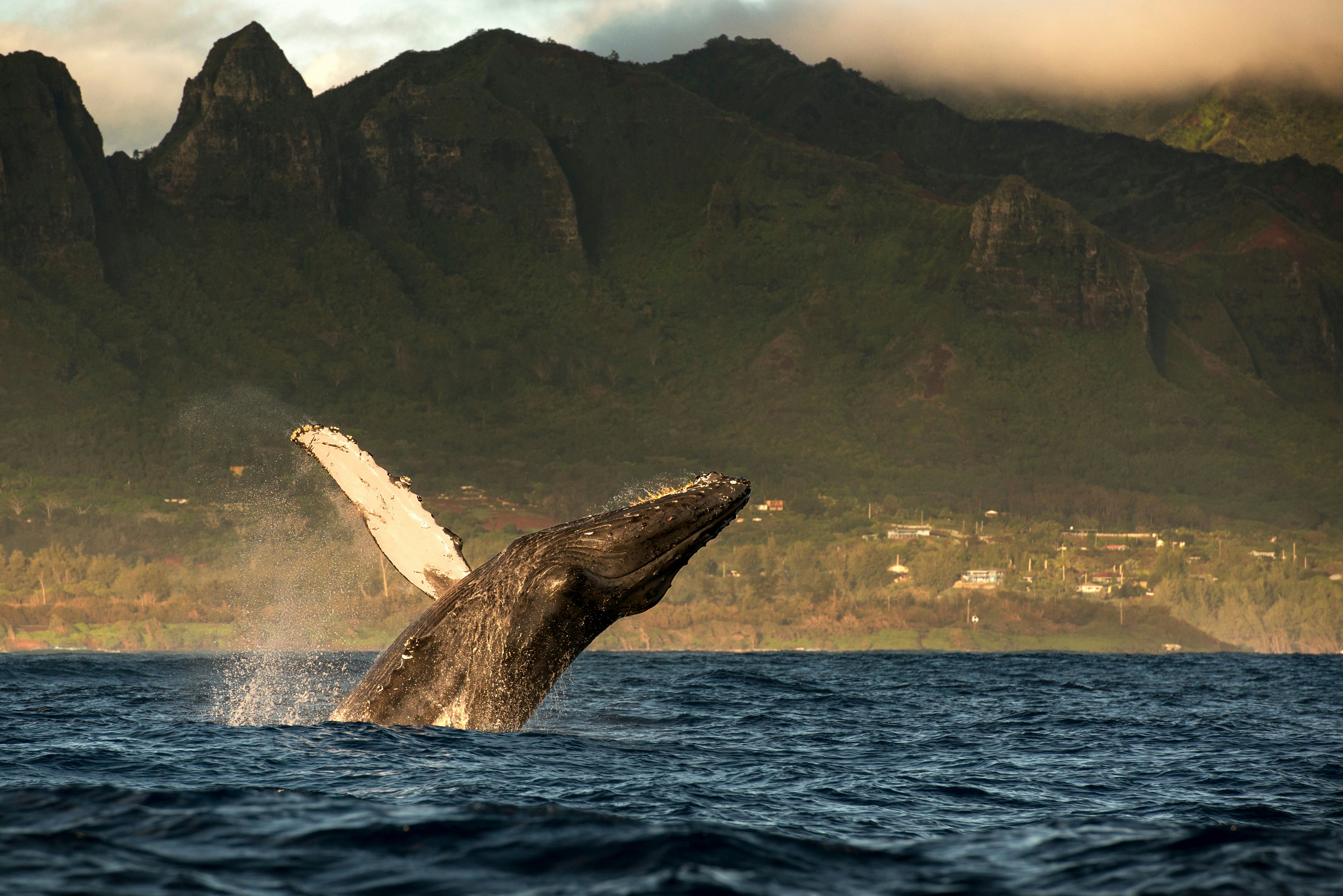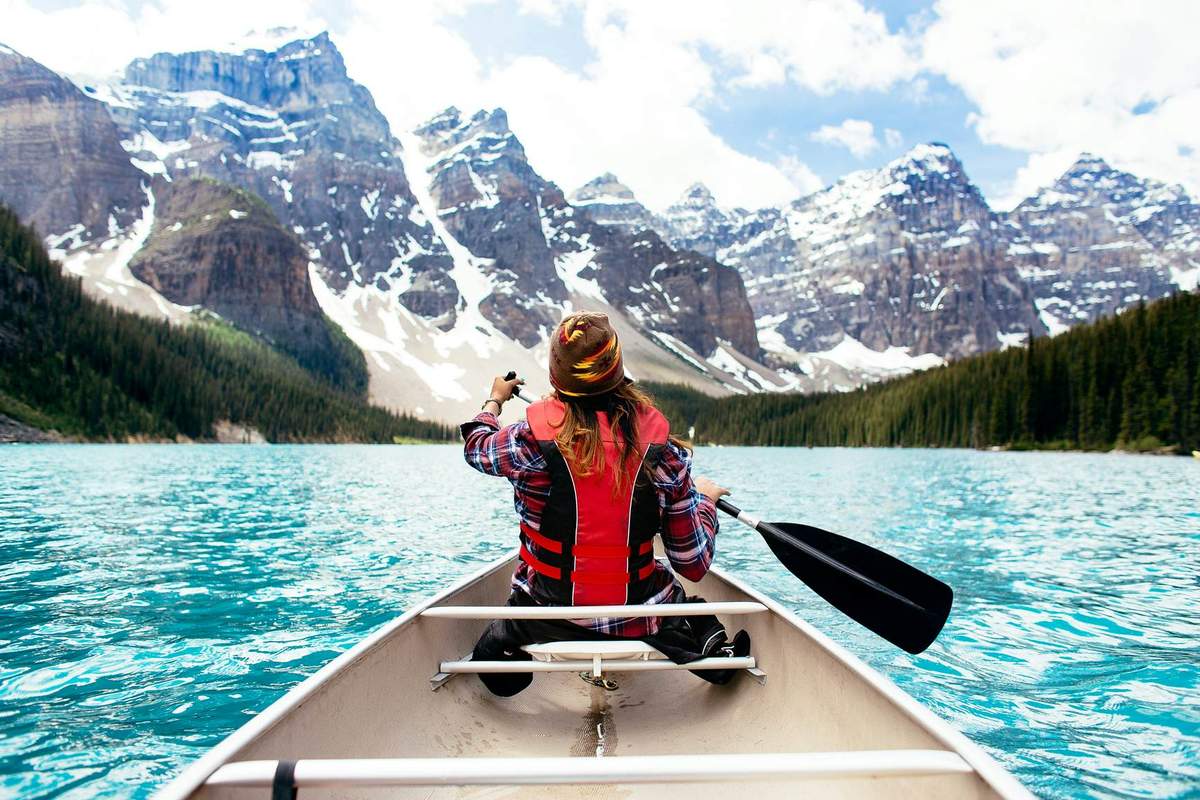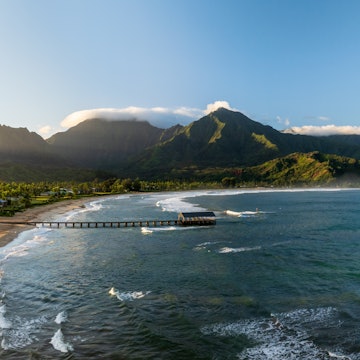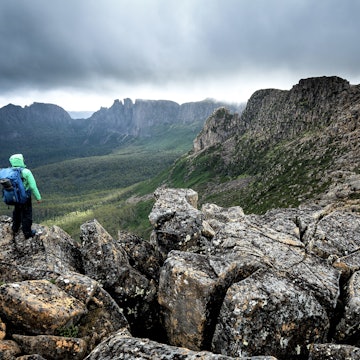

Getting close to a whale is one of the world's ultimate wildlife encounters. Alex Cimbal/Shutterstock
Before I started whale watching, I didn’t know what I had been missing. For some reason, I waited to go whale watching until my early thirties, but after experiencing the top-notch thrill of spotting a whale in the wild, I was hooked. Ten years later, I’ve had countless whale-watching experiences, and each has left me coming back for more.
As a travel and wildlife photographer, I’ve found that whale watching provides endless opportunities to take amazing photos, both above the water and beneath the surface. Since there’s no guarantee with any wildlife viewing experience, that just makes it all the more special when you hear the iconic sound of a spouting whale and spot these wonderful creatures after all the searching and scanning.
The other thing I love about whale watching is that it’s a completely different experience each time, depending on the destination and level of adventure you choose. From spotting sperm whales in Iceland to swimming with humpbacks in French Polynesia, the range of experiences you can have is remarkable. Here are some of the best places to see whales around the world.

Spot multiple whale species from a RIB boat in Iceland
Best for up close and personal whale experiences
Vibes: Iceland is the picture of Nordic beauty, with more waterfalls than can be counted, epic volcanic landscapes and plentiful geothermal springs, to name just a few of its natural wonders. And all sorts of wildlife can be spotted here, including regal arctic foxes, puffins and many species of whales.
The town of Húsavík in the north of Iceland is nicknamed the “whale-watching capital of Iceland” but it's likely the best whale-watching hub in all of Europe. You can join a tour on a larger, schooner-style boat, or suit up in a windproof jumpsuit for a small-group Rigid Inflatable Boat (RIB) adventure. These speedboats will get you much closer to the action, with a lower vantage point close to the surface of the water. Thrilling? Exhilarating? Breathtaking? Yes to all of the above.
The whale population is so abundant here that in season, there’s a 99% chance that you’ll see a whale on your trip out on Skjálfandi Bay. You might even spot some puffins too. On my tour, I saw humpback whales swimming next to our boat and hit the jackpot by witnessing an incredible whale breach, which spawned a whale-sized gasp from me, too! Before leaving Húsavík, round out your visit by popping into the Húsavík Whale Museum to learn more about Iceland's cetaceans.
Species you'll see: Iceland's waters are home to blue, humpback, minke, fin, sperm, sei, long-finned pilot, and northern bottlenose whales, as well as orcas.
Who to book with: Try Gentle Giants or Húsavík Adventures for RIB speedboat experiences; North Sailing and Friends of Moby Dick use larger, schooner-style boats.
When to come: May to September is the peak whale-watching season, but operators follow their own schedules. Gentle Giants runs tours year-round, Húsavík Adventures runs trips from April 1 to October 31, North Sailing runs tours from March 1 to November 30, and Friends of Moby Dick operates from April 1 to October 31.

Spot killer whales over breakfast in Antarctica
Best for orca encounters
Vibes: If orcas are on your whale-viewing bucket list, Antarctica is one of the best destinations to spot these distinctive two-tone whales. They thrive in cold northern waters, and it gets pretty darn cold on the White Continent.
I was mid-pancake when an announcement sounded through the ship's dining room that a pod of orcas could be spotted from the deck. I dropped my fork and rushed outside to watch several of these magnificent creatures swimming next to the boat while I shivered in my slippers. Simply an incredible experience.
Antarctica is a bountiful feeding ground for orcas, so their numbers (and the chances of viewing them) are high. On many expedition ships, you’ll have the opportunity to go out on Zodiac boats on landing trips, where whale sightings are a daily, if not hourly occurrence.
You might even see whales from a kayak if you grab a spot on one of the paddling excursions. But, as I discovered, orcas might just interrupt your breakfast, and that’s quite alright too.
Species you'll see: Orcas and humpback, blue, fin, minke, sei, southern right and sperm whales.
Who to book with: Visit on a ship-based expedition from southern Chile or Argentina, arranged through an operator such as HX (Hurtigruten Expeditions), Lindblad/National Geographic Expeditions, Aurora Expeditions or Quark Expeditions.
When to come: The Antarctic sailing season runs from late October to late March, with the best whale viewing in February and March, when whales are most active.

Swim With humpbacks in French Polynesia
Best for whale watching from the water
Vibes: Few things in life will make you feel quite so tiny and insignificant as swimming next to a 50ft-long humpback whale. The islands of French Polynesia are one of the few places in the world where you can swim legally and safely with humpback whales, mostly off the shores of Mo'orea and Tahiti.
Every year from July to November, humpbacks migrate to the warm tropical waters of these idyllic islands, which are a dedicated Marine Mammal Sanctuary. Females nurse their newly born calves in the shallow waters closer to shore, making it easier to view them without having to venture too far from land. When I was here, I saw multiple whales from the shore, but swimming close to them is the ultimate whale-watching experience.
To enjoy this wild encounter with gentle giants, you’ll have to book with an authorized tour company led by an accredited guide who will conduct the excursion responsibly, respecting the whales' safety and wellbeing. Hop in the water with a mask and snorkel and underwater camera and prepare to be mesmerized as ginormous whales execute a graceful underwater dance before you. It will be the awe-inspiring swim of a lifetime.
Species you'll see: Humpback whales can be seen while swimming, and you may also spot sperm and pilot whales while crossing the waters by boat.
Who to book with: Reliable operators include Moorea Deep Blue and Moorea Ocean Adventures.
When to come: The peak whale season on Tahiti and neighboring islands is from mid-August to mid-October.

Stand-up paddleboard with belugas in Churchill, Canada
Best for meeting pods of beluga whales
Vibes: You may get the chance to become one with a pod of belugas when visiting Churchill in the far north of Manitoba, Canada. If you love adventure and marine wildlife, this is one of the top destinations on earth where you can experience this exhilarating combination.
Every summer, thousands of beluga whales meander into the comparatively warm waters of the Churchill River to give birth to their calves, delighting visitors who come to view these calm-natured creatures in their natural habitat. Sure, you can see them from a RIB boat, but in Churchill, you can also take the experience up a level.
On this peaceful inlet, visitors can view whales while stand-up paddleboarding, kayaking or "aquagliding" – where you float on top of a mat pulled gently along behind a boat. Because of their curious nature, pods of belugas will surface nearby or even right next to your boat. Some vessels are equipped with a hydrophone so you can hear the whales' captivating vocalizations.
Species you'll see: Beluga whales, sometimes known as “sea canaries” because of their underwater songs.
Who to book with: Reputable local operators include Frontiers North, Churchill Wild and Lazy Bear Expeditions.
When to come: The calving season in the Churchill River runs from mid-June to mid-September.

Spot whales and icebergs in Greenland
Best for wildlife photographers
Vibes: The anticipation level is high when pairing whales with icebergs, especially if you hope to capture an epic photograph or two. Every summer, up to 15 species of whales show up in large numbers to feed in the bountiful waters off the coast of Greenland, and you don’t have to venture far from land to view them.
Humpbacks make regular appearances in the harbor at Nuuk, breaching theatrically right outside the capital of Greenland. I saw them here and while exploring the nearby fjords, where many whales spend the summer months feasting on abundant shoals of fish.
The combination of dramatic fjord scenery, icebergs of all shapes and sizes, and the thrill of spotting so many of these amazing creatures is an experience like nothing else. Can’t make it to Greenland quite yet? Just hop onto Disko Live! to listen to the sound of whales and crackling icebergs broadcasted live from the brand-new hydrophone station in Disko Bay.
Species you'll see: Humpback, fin and minke whales are the species most commonly spotted in Greenland waters.
Who to book with: Greenland-based operators include Nuuk Water Taxi, Arctic Boat Charter and Nuuk Bay Adventures.
When to come: The milder summer is the time to see whales, from June to September.

Whale watch in one of Tasmania’s most famous national parks
Best for encounters with southern right whales
Vibes: Travelers head to Australia’s wild island for adventure in all its forms, from outdoor thrills and wildlife encounters to journeys of the culinary kind, and Freycinet National Park is one of Tasmania’s most famous and beautiful wilderness destinations, situated on the east coast just a few hours from the island's capital, Hobart.
Here, you can view humpback and southern right whales migrating north from Antarctica along the island's rugged coastline to have their young in warmer waters. A few months later, you'll get a second chance to see them during the reverse migration.
Freycinet National Park is perfectly situated for whale watching from land, with viewpoints such as the Cape Tourville Lighthouse and hiking trails leading to summits, overlooks and stunning beaches. You can sleep inside the national park at the Freycinet Lodge, guaranteeing quick access to the best whale-watching spots.
If you want to be in a prime position for whale spotting 24 hours a day, book a multi-day luxury boat expedition from Hobart to Freycinet with OnBoard.
Species you'll see: Humpback and southern right whales.
Who to book with: Try OnBoard Expeditions for a luxury multi-day trip, or Wineglass Bay Cruises and Freycinet Charters for shorter excursions.
When to come: May to July and September to November for humpbacks; June to September for southern right whales.

See Whales and Dolphins in Kauaʻi
Best chance of viewing awesome acrobatics
Vibes: The Nā Pali coast of Hawaii’s Kauaʻi island is one of the most gorgeous places I’ve seen from the water. Add in humpback whale sightings and a pod of spinner dolphins weaving around the boat and it was a mic-drop moment.
Both of these species are known to jump, leap, spin, and just generally create a spectacle, and Kauaʻi is a great place to see them perform. I joined a sunset catamaran cruise, and in addition to glorious island views, we saw several whales spouting in the distance and had spinner dolphins riding the wake of our boat, showing off their graceful moves. Oh, and the sunset was pretty special, too!
Species you'll see: Humpback whales and spinner dolphins are common off Kauaʻi in winter.
Who to book with: Recommended operators include Capt Andy’s, Blue Dolphin Charters and Kauai Sea Tours.
When to come: The best time to see cetaceans is December to March.
Whale watch year-round on the island of Madeira
Best for guided whale and dolphin trips
Vibes: The island of Madeira, off the coast of Portugal, has a diverse array of activities on offer, including year-round whale and dolphin watching. I joined an all-inclusive catamaran lunch cruise to see what I could see of Madeira’s marine life, which includes humpback, sperm, pilot and Bryde’s whales, as well as common, spotted and bottlenose dolphins. Sometimes, it’s even possible to spot leatherback turtles.
The cruise kicked off with some bubbly aboard VIP Dolphins luxury catamaran, which was a welcome add-on, before we were taught about the spotters known as “vigias,” used by whale-watching companies to track down cetaceans from cliffside vantage points. Staff also shared tips for spotting – listening for the blowhole spout is just as important as looking with binoculars!
If a spotter views something in the water, they communicate with the boat captain and the vessel goes to check it out. I can confirm that it’s pretty exciting when this happens, as sightings are very likely.
Species you'll see: Humpback, sperm, pilot, Bryde’s whales and more, as well as common, spotted and bottlenose dolphins.
Who to book with: Operators on the island include VIP Dolphins, Magic Dolphin and Lobosonda.
When to come: Year-round, with the peak months typically running from spring to fall (April to October).

Hit the Newfoundland trifecta while watching whales
Best for whales, puffins, and icebergs
Vibes: Think icebergs, quaint coastal villages with colorful houses, islands dotted with puffins, and humpback whales with their calves gliding right next to your boat. Between May and September, the largest population of humpback whales on the planet returns to the waters around this Canadian island to feast, and you can spot them on whale-watching tours from locations such as Trinity, Bay Bulls and Hare Bay.
The best way to search for whales in Newfoundland is by boat, but it’s also possible to see them from many coastal trails, harbors and village waterfronts. Since the eastern coast of Newfoundland is situated in the so-called “Iceberg Alley” between Labrador and Greenland, it’s quite possible that you’ll tick off the trifecta of whales, puffins and icebergs, especially if you venture out on a boat to puffin-thronged islands offshore.
Species you'll see: Humpback whales and puffins.
Who to book with: Based in the bay of the same name, Hare Bay Adventures runs rewarding trips.
When to come: May to September is when whales gather.
Spot the largest mammal on Earth in Baja California Sur
Best for meeting blue whales
Vibes: Larger than life, and we mean that literally. Blue whales are the largest mammals on Earth and you may get the opportunity to view all 200 tons of their majesty on a visit to Mexico’s Baja Peninsula. Thousands of blue, gray and humpback whales migrate from Alaska to the warmer waters of Baja California Sur in the winter and spring, promising thrilling encounters.
Base yourself near the town of Loreto between January and the end of March and nature may grant you a blue whale sighting in Loreto Bay Marine National Park, a UNESCO World Heritage Site. A bit further north in the El Vizcaíno Biosphere Reserve, visitors can get up close and personal with gray whales on small boat tours from the beginning of February to early April.
Species you'll see: Blue, gray, humpback and sperm whales.
Who to book with: Try Loreto Sea & Land Tours and Wild Loreto Tours for blue whale encounters, or Magdalena Bay Whales or Baja Ecotours for trips to spot gray whales.
When to come: January to the end of March for blue whales, or February to early April for gray whales.
















